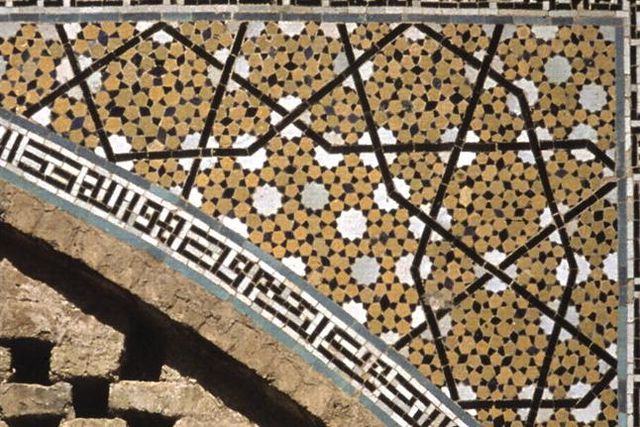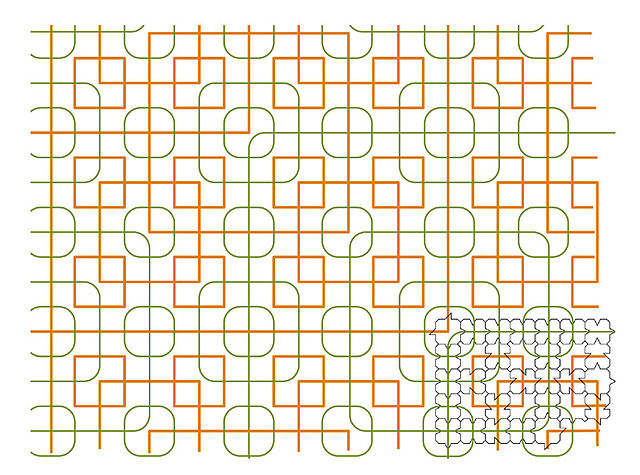A Penrose tiling is an example of an aperiodic tiling. Here, a tiling is a covering of the plane by non-overlapping polygons or other shapes, and a tiling is aperiodic if it does not contain arbitrarily large periodic regions or patches. However, despite their lack of translational symmetry, Penrose tilings may have both reflection symmetry and fivefold rotational symmetry. Penrose tilings are named after mathematician and physicist Roger Penrose, who investigated them in the 1970s.
Roger Penrose in the foyer of the Mitchell Institute for Fundamental Physics and Astronomy, Texas A&M University, standing on a floor with a Penrose tiling
A non-Penrose tiling by pentagons and thin rhombs in the early 18th-century Pilgrimage Church of Saint John of Nepomuk at Zelená hora, Czech Republic
Pentagonal and decagonal Girih-tile pattern on a spandrel from the Darb-i Imam shrine, Isfahan, Iran (1453 C.E.)
Salesforce Transit Center in San Francisco. The outer "skin", made of white aluminum, is perforated in the pattern of a Penrose tiling.
An aperiodic tiling is a non-periodic tiling with the additional property that it does not contain arbitrarily large periodic regions or patches. A set of tile-types is aperiodic if copies of these tiles can form only non-periodic tilings.
A portion of tiling by the Robinson tiles





